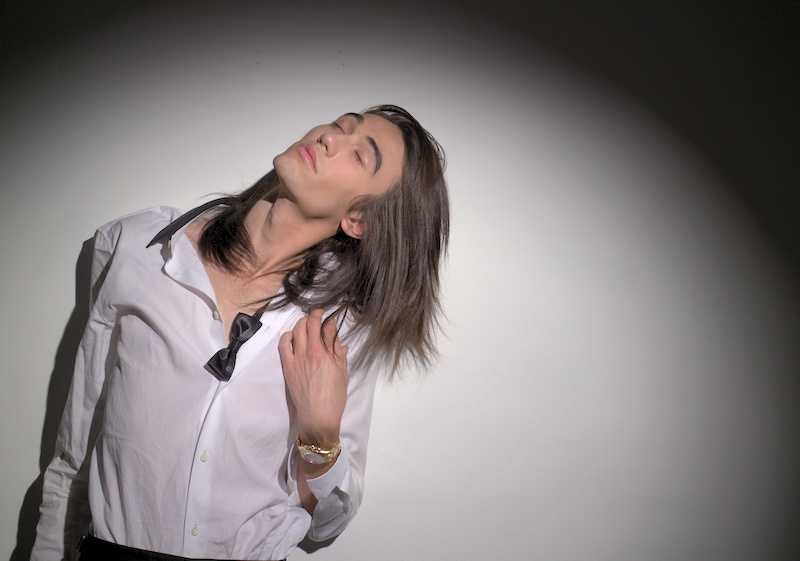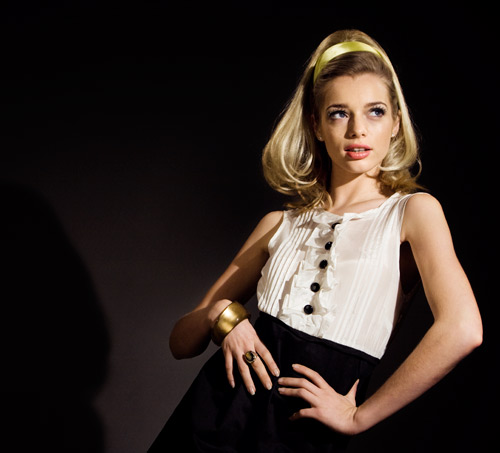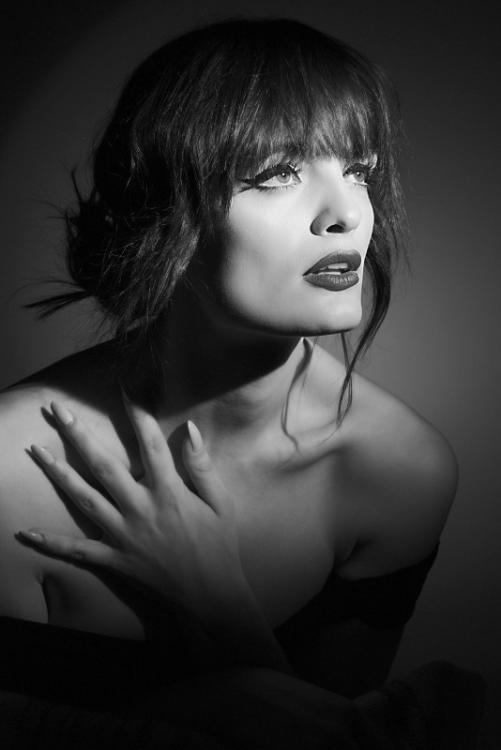-
Posts
1,151 -
Joined
-
Last visited
Content Type
Profiles
Forums
Articles
Everything posted by tupp
-
Wait... Panasonic had to go EF with the EVA1?
-
Actually, Panasonic would be getting a much more serious and versatile camera for very little extra in cost. There has to be some sort of "tube" or enclosure going from the sensor to the lens mount. So, having that "tube" as a separate piece doesn't require much extra in materials, but it adds a whole heck of a lot to the capability (and maintenance) of the camera. The extra costs would be for: a separate die-cast piece (could be incorporated in the same die as the rest of the camera housing); one to four threading operations in the camera body (about US$2 each); a deburring operation; a powder coating (again, no extra materials here); wiring/contacts for the EF electronics (US$30?). Such a small expense is negligible to such an expensive camera, but a removable front would greatly enhance what lenses and adapters/speedboosters one can use. Who said anything about using Panasonic lenses? That is the kind of narrow thinking that produces cinema cameras with EF mounts! A removable front would literally open the camera up to a whole world of lenses, including professional cinematography lenses offered in PL mount, PV mount, C-mount, Arri Bayonet mount, and it would even allow the attachment of "Minolta, Konica, or FD lenses (which all have very nice optics)." Additionally, such a feature would enable the use of focal reducers (extra stops and wider view angle), tilt/swing adapters, macro bellows, helical mechanisms, and other lens modifiers. Certainly, the typical walled-garden EF shooter is not interested in such versatility, but this multitude of possibilities would be very useful to cinematographers who want to create interesting images and who want to get an edge on the "straight" shooters. Again, the additional manufacturing cost for a removable front would be minimal, and the EF shooters would never know the difference.
-
Yes. Essentially, frequency separation is wavelet decompression with with just two layers -- the residual layer and the high frequency layer. However, on Photoshop it probably still has to be done manually (similar to the manual procedure given by the OP). Two layer frequency separation sets up a little more quickly in the GIMP, due to the grain extract and grain merge features. Of course, it is even faster to get two-layer frequency separation in the GIMP with either of the wavelet decompression plug-ins, but setting it up manually probably gives one more control over the "frequency." I don't know if Photoshop currently has a wavelet decompression plug-in (it didn't have one four years ago). If it doesn't, manually making five wavelet scale layers plus a residual layer would probably be a long, arduous process in Photoshop.
-
... Not to mention that Panasonic could customize the external housing of the smart adapters to follow the form of the camera, employing a extra reinforcement flange that bolts the adapter to the camera body. Clueless EF shooters would mount (and electronically control) their lenses with no wobble... and they would be none the wiser that they were actually using an adapter!
-
[cough] Nikkor lenses [cough, cough] Zeiss lenses [cough] Leica lenses [cough, cough] FD lenses [cough]
-
After scanning this thread, this method reminds me of the wavelet decompose plug-ins for the GIMP, which is a functionality that has been in open-source software for years. Basically, these plug-ins separate detail "frequencies" into their own separate layers. I use wavelet decompose mostly for skin retouching, but some have been using it for sharpening for quite awhile. One of the wavelet decompose plug-ins can separate an image into 100 different frequency layers, but I can't imagine why that many separate frequencies would ever be needed. I don't think that proper wavelet decompose functionality has yet appeared in proprietary imaging software. Often, advanced features such as this show up in Photoshop years after the GIMP, and these "new" features are usually much trumpeted by the Adobe crowd.
-
Indeed. For some reason, most manufacturers (and many shooters) can't comprehend the incredible advantages of starting with a shallow lens mount on the camera. All that is needed after that is smart adapters (perhaps with some customization).
-
@TheRenaissanceMan: Judging from the photos above, do you still think that open-face sources "have hot spots, uneven spread, and a generally harsh quality of light?"
-
Try that shot with all stabilization deactivated and use only one leg of your tripod (like a monopod).
-
Redheads and blondes generally provide a very wide, smooth beam, more so than many Fresnels and other fixtures with refractive optics. Lekos (ellipsoidals) aren't necessarily smoother than Fresnels nor open-face lights. Lekos are certainly limited in their application, as their beam is relatively narrow with a hard cut at the edge, and as they are significantly less efficient than Fresnels and open-face lights (especially open-face lights) with comparable wattage. On "full spot" open-face lights are give almost exactly the same results as those of Fresnels, but the open-face fixtures generally have more spill outside of the spot with a more gradual pattern fall-off. Below are three images shot with direct light from either a Fresnel fixture or an open-face fixture of comparable size. I shot at least one of these pictures. Can you tell me which ones were lit with a Fresnel source and which ones were lit with an open-face source?
-
That explains why we use Fresnels to illuminate smooth cycs and green screens instead of open-face cyclights and open-face flood washes specifically made for that purpose. /s What?! Open-face sources have "hot spots" and "uneven spread?" ... compared to Fresnels?! Please explain. Too busy right now to respond to the rest of your post.
-
Don't confuse "photon shot noise" with the noise generated by a digital (or analog) system. This type of noise is the random photons that strike the film, sensor, video tube, retina, etc. Since photon shot noise is something that applies equally to almost any type of imaging system using electromagnetic waves yet is not inherent in any of these systems, this type of noise is irrelevant to a discussion on the noise produced by a camera, sensor or digital system. SNR in imaging is not based on RGB values, and it is a metric that is used in analog imaging systems that might not even have RGB values. SNR is essentially the ratio of a signal's amplitude to it's noise level, and SNR is usually expressed in decibels. Dynamic range is a similar metric that also applies to both analog (some without RGB values) and digital systems. Not sure how that would work. Sounds a bit shaky. Yes. You can. The noise floor within an imgaging system can usually be determined fairly easily, Just look at any proper dynamic range chart/test. Keep in mind that the increase in photon shot noise with greater exposure is not inherent in the imaging system itself. No. You are describing bit depth, which is not color depth. Color depth in digital systems is simply the resolution multiplied by the bit depth to the power of the number of color channels, so for an RGB digital system, the formula is: COLOR DEPTH = (BIT DEPTH x RESOLUTION)³ Also, keep in mind that we can have great color depth without any bit depth, as in analog imaging. In addition, because resolution is a fundamental factor of color depth, we can have great color depth in digital imaging systems that have a bit depth of "1," as in digital screen printing. Agreed. We don't usually separate the noise from the color depth of a system -- even the noise has color depth.
-
Ouch! ... and yet, DxOMark gives color depth scores in "bits" (bit depth?), implying a fundamental misunderstanding of digital color depth. Their explanation of their color depth metric is somewhat vague and based on a dubious characteristic, which they term as "color sensitivity." There is a mathematical formula for absolute color depth of a digital system. A fairly accurate figure can also be given to represent the absolute number of shades above the noise floor (effective bit depth -- not color depth). Don't know why DxOMark doesn't use these basic metrics.
-
Actually, resolution is a big factor of color depth, and color depth is mostly an independent property from ISO (the DxOMark "sports" score). On the other hand, the DxOMark "color depth" rated as "bit depth" is dubious (to say the least). Most do not realize that resolution and bit depth are equally weighted factors in determining color depth in digital systems. The actual formula to determine the color depth of digital RGB systems is simple: COLOR DEPTH = (BIT DEPTH x RESOLUTION)³ The bit depth is the number of values per channel, so 10-bit=1024, 12-bit=4096, 16-bit=65536, etc. The resolution is usually that of one color channel of the entire frame, which would yield the absolute color depth of the entire digital image (ie. with 1920x1080 RGB pixel groups, the resolution of one color channel would be 2,073,600). So, given resolution's equal weighting to bit depth as a factor of color depth, DxOMark use of "bit depth" figure to express color depth seems fundamentally flawed. DxOMark's explanation of their color depth metric is vague and apparently involves a characteristic which they call "color sensitivity," but they give no information on how this property is derived.
-
I did not disregard binning. I directly addressed binning: Actually, binning yields slightly reduced signal-to-noise ratio compared to that of equivalently larger photosites. In the first place, there are fewer photons/light-waves captured with four binned photosites as compared to a single equally-sized photosite. This is due to some photons/light-waves being wasted when striking the border between the binned photosites. In addition, there is a minute increase in noise inherent in binning. It's very tiny, but it appears nonetheless. Also, the binned photosites don't have less noise than an equivalent sized larger photosite with the same sensor tech. Furthermore, as I said above, you can't compare apples to oranges -- if you bin one sensor but not the other, you are presenting two different scenarios regarding post sensor processing, and you are now dealing with two variables (instead of one): photosite size; and post sensor processing. Again, larger photosites give better performance than smaller photosites, as long as all other variables are equivalent -- identical sensor tech and identical post sensor processing. No. As I mentioned, there is a slight increase in noise when binning. We are discussing sensors and photosites -- not printing. Some of the rain drops will be lost in the "48" grid, as a few drops will land on the border between the vessels and a few drops will stick to the inside of the "48" vessels when you pour (bin) each group of "48" vessels into each respective "12" vessel. Firstly, noise doesn't increase just because an image is projected to a lager size -- the noise level stays the same relative to the image, regardless of projected size. Secondly, even if noise increased when a (say) 12MP image was projected, the exact same thing would happen to a 12MP image binned from a larger resolution (say 48MP). No. My "model" applies to all digital imaging sensors, including those to which binning (summed or averaged) has been applied. Larger photosites yield greater signal-to-noise than smaller photosites on sensors with the same tech, all other variables bein equal.
-
No. Dynamic range, noise and sensitivity are all part of the same thing. Larger photosites have less noise, i.e. a lower noise floor (all other variables being equal). Dynamic range essentially is the range of amplitude above the noise floor. So, with a lower noise floor we get a greater dynamic range. In addition, lower noise means greater effective sensitivity. Larger photosites yield images with less noise, and, thus, higher effective ISOs. So, larger photosites simultaneously provide greater dynamic range, reduced noise and increased sensitivity. Certainly, a larger sensor receives more photons/light-waves (all other variables being equal). Nevertheless, the size of the sensor inherently has nothing to do with it's performance regarding DR/noise/sensitivity. If you take two full frame sensors that are absolutely equal in every way, except for one has larger photosites than the other, the sensor with the larger photosites will have better performance in regards, to DR/noise/sensitivity, at the sensor level (all post sensor processing being equal). In addition, if you take the exact same scenario, and merely swap out the full frame sensor having bigger photosites with a M4/3 sensor that has the same size photosites, the M4/3 sensor will have better DR/noise/sensitivity performance, at the sensor level. Keep in mind that the full frame sensor and M4/3 sensor in this scenario are absolutely equal in every way, except for the M4/3 sensor has larger photosites than the FF sensor (and remember that all post sensor processing on both sensors is equivalent). No doubt. However, if you equally bin two sensors (with identical sensor tech) equally, the sensor with the larger photosites will give greater dynamic range, reduced noise and increased sensitivity. You can't "compare apples to oranges." All other variables must be equal -- if one sensor is binned, then the other sensor must be equally binned. Again, this is comparing apples to oranges. The newer sensor tech in the A7R introduces additional variables other than merely larger photosites. If you made a M4/3 sensor with the A7R sensor tech and gave that sensor larger photosites than the A7R sensor, the M4/3 version would have better DR/noise/sensitivity performance. Once again, this is comparing apples to oranges. If the BMCC sensor has larger photosites that certainly helps with it's capture dynamic range, but there is a huge difference in both the sensor tech and in post-sensor processing between the BMCC and current M4/3 cameras. The BMCC is an older sensor, and it's greatest capture dynamic range comes from its raw mode, which applies hardly any post-sensor processing. On the other hand, most M4/3 cameras have a lot of post-sensor processing, including noise reduction, which can increase sensitivity but not necessarily capture DR. If you were to take a sensor from any of the cameras that you mention and create another sensor with the same exact sensor tech, but with larger photosites, the sensor with the larger photosites would yield greater DR, less noise and increased effective sensitivity.
-
Just to reiterate: in regards to a sensor with a given quality/configuration, it is the photosite size that influences maximum sensitivity/DR -- not the size of the sensor. When comparing a full frame sensor with zillion megapixels (tiny photosites) to a M4/3 with much fewer, larger photosites, the M4/3 sensor will exhibit a higher maximum usable sensitivity and a greater capture dynamic range. Again, this principle assumes that all other variables are equal, such as: the sensor internal configuration/design; the A/D converter; post-sensor NR; etc. Of course, if we compare a full frame sensor and a M4/3 sensor having the same resolution and the same internal configuration/design, the full frame sensor will have larger photosites, and thus greater max sensitivity and dynamic range. So, if you embiggen the photosites, you generally embiggen the sensitivity/DR, regardless of what the "jabronis" say. embiggen:
-
If the iso, shutter speed and f-stop are the same, then the exposure of the two cameras should be the same, regardless of the sensor size. With identical settings and barring the use of filters or extreme color/contrast profiles, the only difference in exposure might be due to lens transference. Keep in mind that iso is "sensitivity," so two cameras set to the same iso should have the same light sensitivity. Noise is an entirely different issue, but suffice it to say, larger photosites (sensor pixels) usually mean less noise (more dynamic range), all other variables being equal. So, if a full frame sensor and a M4/3 sensor have the same resolution, the full frame sensor will likely have less noise (all other variables being equal).
-
As the saying goes, "the best camera is the one that you have with you." So, if you are traveling, you might consider a serious "large sensor" compact camera such as the Panasonic LX100. Do you really want to tote around a camera and interchangeable lenses? The LX100 is relatively inexpensive and yields nice 4k footage, and, most importantly, it sports a spectacular, fast Leica zoom. On the other hand, it only shoots HD in 60p, but how important is it to have 4K 60P footage of your vacation? Well, if your travels take you to India, the LX100 seems to work well there!:
-
.. Or perhaps Tim Cook just can't sustain the reality distortion field. Chiclet/island keyboards suck, regardless. Back in the early 1960s IBM spent about two years field testing differently shaped keys for their new Selectric typewriter. They found that the "cupped-top" keys (along with a certain amount of travel and key spacing) gave the best performance, overwhelmingly. Bell Telephone came to the same conclusion with the the cupped-top keys on their touch tone phones starting in the late 1960s. Two years makes a fairly exhaustive field test, so that basic key design is hard to beat by some fashion-conscious industrial designer who favors form over function. There are still companies that field test, but probably not as thoroughly as was common in the past. Since the late 1990s, Apple has done very little field testing.
-
He was so young and talented. Sad. Thanks for posting this.
-
Thanks for the link!






